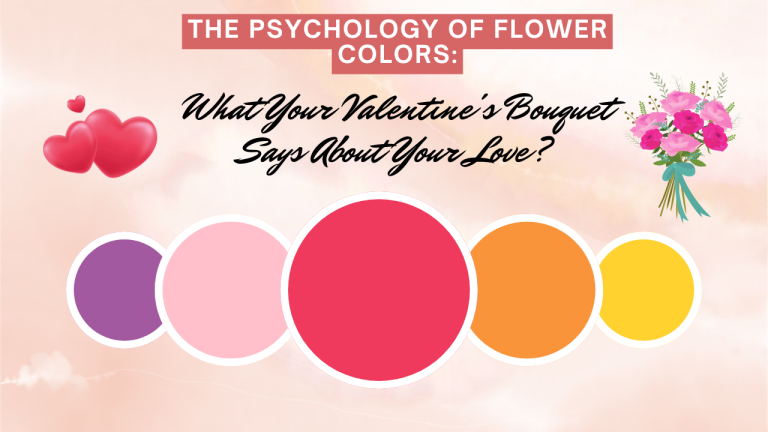As winter brings its gray skies and shorter days, countless individuals around the globe feel the impact of Seasonal Affective Disorder (SAD). Although conventional treatments such as light therapy and counseling are crucial, recent studies indicate that the thoughtful application of color in our surroundings could help ease some symptoms of SAD. We can discover new ways to enhance mental well-being during the darker months by exploring how various colors affect our mood and energy.
The Science Behind Color and Mood
Our brains have an incredible ability to process color, which can trigger hormonal responses that influence our energy levels and emotional well-being. In the winter months, when natural light is limited, these color-related responses become especially important for individuals dealing with SAD.
Dr. Sarah Martinez, a neuropsychologist who focuses on how environmental factors impact mood, explains that “the way we perceive color activates certain neural pathways, which in turn affects the production of neurotransmitters such as serotonin and dopamine. For individuals with SAD, being around specific colors can help counteract the neurochemical imbalances that frequently arise during the winter months.”
Energizing Colors for Dark Days
Yellow, often regarded as nature’s most vibrant color, is especially effective in lifting spirits during the winter months. Interior designer Michael Chen has noticed this impact while working with clients affected by Seasonal Affective Disorder: “When we incorporate warm yellow hues into their homes, clients frequently mention feeling more energized in just a few days. It’s akin to inviting a bit of sunlight inside.”
Research backs this idea, indicating that being in yellow surroundings can:
- Boost mental engagement
- Foster a sense of optimism Improve focus and clarity
- Encourage the release of serotonin, commonly referred to as the “happiness hormone”
The Surprising Power of Blue
It may seem odd to use blue to combat the “winter blues,” but specific shades of blue can actually have very uplifting effects. In contrast to the dreary grays of winter skies, bright blues that evoke clear summer days can help bring back a feeling of tranquility and balance.
Environmental psychologist Dr. James Wilson explains that “the right shade of blue can help regulate our circadian rhythms, which often get thrown off during the winter months. Just think about how energizing a bright blue sky feels – we can bring that same sensation indoors.”
Creating a Color-Based Support System
The key to effectively using color therapy for SAD is to implement it strategically in your daily surroundings. Begin with the areas where you spend the most time:
Home Office: Add energizing yellows through desk accessories, artwork, or an accent wall. The aim is not to create an overwhelming brightness but to introduce uplifting elements that boost mental energy.
Bedroom: Opt for calming yet vibrant blues in your bedding or curtains. These colors can help maintain healthy sleep patterns while also providing an emotional lift when you wake up.
Living Areas: Mix warm yellows with complementary shades like soft oranges or gentle greens to create a space that feels both energizing and balanced.
Beyond Basic Colors
While yellow and blue are key players in color therapy for SAD, other colors also provide valuable support. Green, which evokes feelings of nature and growth, can help keep us connected to the outdoors during the indoor winter months. Orange, known for its warm and sociable vibes, can help alleviate the sense of isolation that many experience in winter.
Professional Perspectives
Mental health professionals are increasingly acknowledging the importance of color in enhancing traditional treatments for SAD. Therapist Rebecca Torres explains, “I frequently talk about the use of color with my SAD patients. Although it shouldn’t replace other therapies, intentional color selections can offer meaningful supplementary support.”
Practical Implementation Tips
The aim isn’t to completely transform your space but to introduce thoughtful color elements that enhance emotional well-being. You might begin with:
Small Accessories: Items, like throw pillows, blankets, or artwork in uplifting colors, can easily modify your color scheme.
Natural Elements: Brightly colored fresh flowers, such as yellows or blues, not only add color therapy but also bring a touch of nature indoors.
Lighting Choices: Using color-changing LED bulbs lets you tailor the room’s ambiance to suit your mood at different times of the day.
Morning Energy Boost Colors
Sunrise Gold (Hex: #FFD700)
Energy Level: High | Mood Impact: Energizing
Dawn Coral (Hex: #FF7F50)
Energy Level: Medium-High | Mood Impact: Invigorating
Midday Focus Colors
Clear Sky Blue (Hex: #87CEEB)
Energy Level: Balanced | Mood Impact: Clarifying
Fresh Mint (Hex: #98FB98)
Energy Level: Medium | Mood Impact: Refreshing
Afternoon Renewal Colors
Lavender Rose (Hex: #E6A8D7)
Energy Level: Gentle | Mood Impact: Uplifting
Turquoise Spark (Hex: #40E0D0)
Energy Level: Medium | Mood Impact: Revitalizing
Evening Calm Colors
Twilight Purple (Hex: #DDA0DD)
Energy Level: Low | Mood Impact: Soothing
Dusk Blue (Hex: #B0C4DE)
Energy Level: Very Low | Mood Impact: Calming
Therapeutic Color Combinations
- Morning Vitality Mix:
- Midday Balance Blend:
- Afternoon Refresh Duo:
- Evening Serenity Pair:
Usage Tips
• Midday: Incorporate Clear Sky Blue in work areas
• Afternoon: Add touches of Turquoise Spark to prevent energy dips
• Evening: Transition to Twilight Purple and Dusk Blue for gentle unwinding
The Individual Nature of Color Response
While research offers general insights into the effects of colors, personal reactions can differ greatly. Consider keeping a mood journal as you experiment with new colors to discover which ones resonate with you the most.
Conclusion
While color therapy by itself may not cure SAD, using color thoughtfully can offer significant support during the tough winter months. By recognizing and applying colors that boost our mood, we can design spaces that help alleviate the impact of shorter days and dreary skies. As with any strategy for managing SAD, it’s important to consult with healthcare professionals to create a well-rounded treatment plan that might incorporate color therapy as one of several effective tools for preserving emotional health during the winter season.







